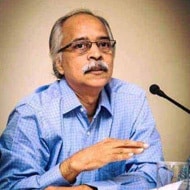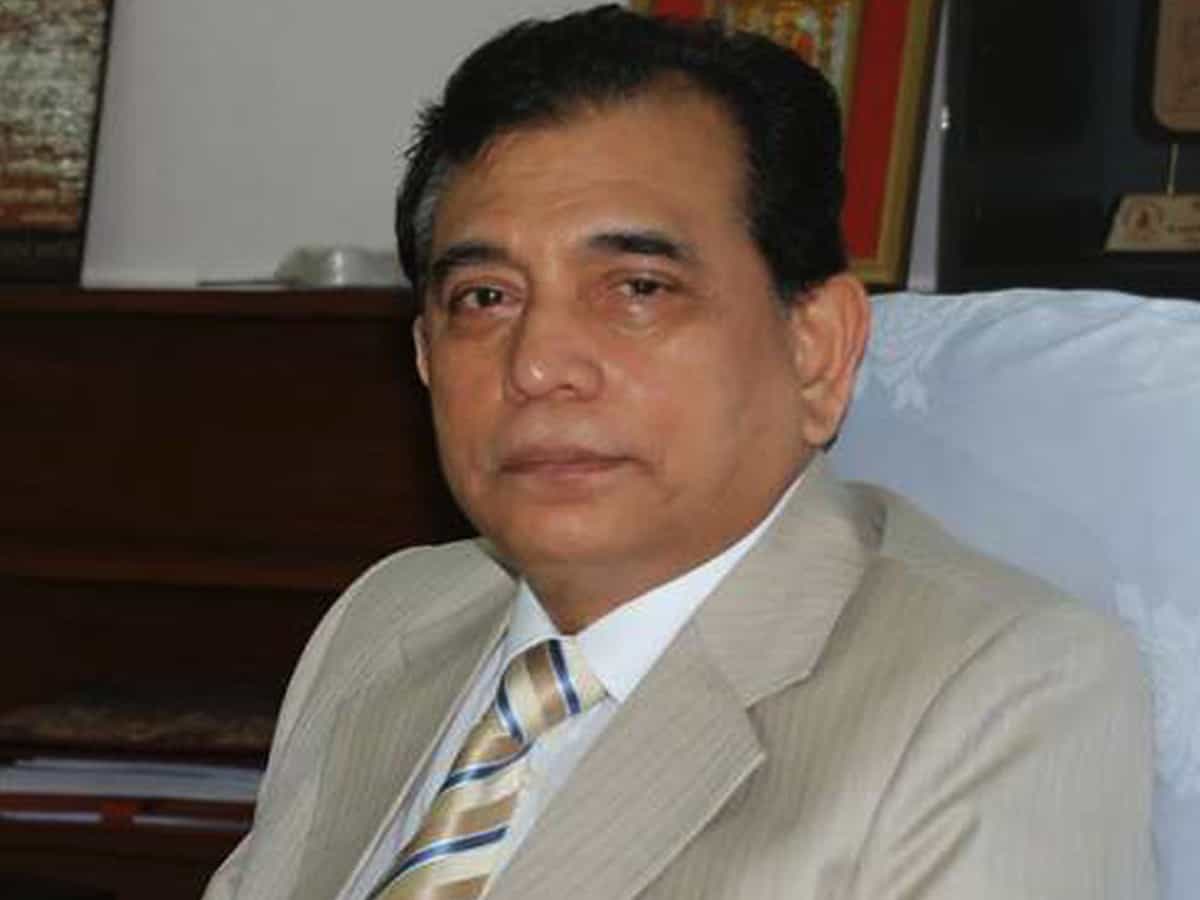
Born in Jaunpur district of Uttar Pradesh, trained in UK in DNA fingerprinting, Prof Lalji Singh, did groundbreaking work in Hyderabad, to etch his name in Science forever with his contributions.
The no-nonsense administrator, pioneering researcher and scientist, who would have entered 75 on July 5, brought DNA fingerprinting to the limelight, both in research and applications in a span of 25 years. Rightly so Lalji Singh, who passed away in 2017, is referred to as the ‘Father of DNA Fingerprinting’, in India.
Dr Lalji Singh arrived in Hyderabad in 1987 on the invitation of then Director of the Centre for Cellular and Molecular Biology (CCMB), Dr P M Bhargava. He left a promising career in the UK, where he worked with Dr Alec Jeffreys, the pioneer in DNA fingerprinting technology.
Incidentally, 1987 was also the year that the CCMB was formally inaugurated as a new national laboratory by then Prime Minister Rajiv Gandhi at a grand function attended by several Nobel laureates, including Dr Francis Crick, who with Fr James Watson decoded the ‘Double Helix structure of the Human DNA (Deoxyribonucleac acid).
The then 40 year old Lalji Singh, who was born on July 5, 1947 at the cusp of India’s Independence into a modest family in Kalwari village in UP’s Jaunpur district, immediately set about establishing a modern DNA lab and building a team. His indigenous probe, derived from the snake venom was waiting to be put into use in research and application.

Rajiv Gandhi assassination & DNA
Lalji, CCMB and Hyderabad soon became popular for ‘ DNA fingerprinting’, as the technique cracked high profile cases from Rajiv Gandhi assassination to the infamous ‘Thandoor Case’ or murder of Naina Sahni in New Delhi in the 1990s to the very recent paternity case involving N D Tiwari, then Governor of AP and former Union Minister.
With the full backing of Dr Bhargava, Dr Lalji, Dr KV Rao, Dr Thangaraj and their team started using the technique in settling paternity cases, crime and research into conservation of animals to utilisation in agriculture.
To the credit of Dr Lalji, he personally appeared in courts to explain the evidence derived and the importance of DNA fingerprinting to the judges in scores of cases for several years. I recall he narrating how in paternity disputes, sometimes when he went to court to present evidence, the men disputing the case would confess without much argument too. In some cases, the request for a DNA sample was enough to put the fear, Dr Lalji would tell me.
That the DNA evidence is admissible in courts and is used routinely today right from the blast case that killed Beant Singh to the Dadri lynching to ND Tiwari’s paternity dispute is a testimony to his tireless efforts spanning hours of explanations over years in the lowest to the highest courts in the country.
From Jaunpur to Hyderabad
Lalji Singh was genuinely at home in Hyderabad. His passion for DNA fingerprinting, the 24/7 work culture at the CCMB created by Dr Bhargava and Dr D Balasubramanian and dedicated band of students, brought out, research output of international standards.
He rose to Directorship in 1998, succeeding Dr Balasubramanian, who too improved the reputation of the CCMB during his tenure from 1992. The CCMB was attracting outstanding talent and was flushed with funding in the initial years as a unique Centre for Biological research.
The Jaunpur boy had moved on to reach Banaras Hindu University from where he earned a PhD in 1971 for his study of the chromosomal differences between male and female snakes. He went on to identify a region of DNA that has repetitive sequences of GATA, the alphabets that make up DNA. This region, coined the Banded Krait minor (Bkm), was to lead him to develop the probe.
Lalji and team used the indigenous probe extensively.
To illustrate his liking for Hyderabad, I can recall my meeting him at an international conference in New Delhi, where I was working in 1999. During a discussion, he told me to shift back to Hyderabad saying it was a better city, well managed, scientific temper, good culture and peaceful. Why suffer the Capital, he asked.
An institution builder for Hyderabad
Lalji Singh played a crucial role in not just taking CCMB to greater heights but in the creation of several national facilities in Hyderabad. These include the Centre for DNA Fingerprinting & Diagnostics (CDFD), the Laboratory for Conservation of Endangered Species (LaCONES), BSL IV Facilities and the establishment of the Genome Foundation.
If CDFD specialises in genetic diagnostics and identification, LaCONeS uses modern genetic tools to improve conservation of endangered species and prevent illegal trading in wildlife products.
During his tenure as Director, CCMB he expanded the facilities, strengths in various departments attracting talent from abroad. He also initiated genomic studies to understand the origins of population groups in India. These studies, mostly with Dr Thangaraj and team revealed the genetic footprints of early humans from Africa to connections with Andaman and Nicobar tribes and to mainland Indian caste groups. Some of the work focussed on Aryans and Dravidian too. The large body of work on Population Genetics, some of which in collaboration with global consortia of reputed institutes, is widely appreciated.
He began the healthy practice of organising press conferences, where he got the scientist and team to explain their work and get due credit for any outstanding research publications. As director, he would only supplement.
To Banaras and back to Hyderabad
In a rare opportunity, after retirement from CCMB, he was invited to be the Vice Chancellor of the BHU, his Alma mater in 2011. He took on the challenge boldly with a mission to contribute. He started a Masters course in forensic science. But, somehow, he would say, that he could not give his best due to the complex issues prevailing in the University.
But, then, he had his Hyderabad to return, where he had his own house, a good circle of connections and where his children grew up. Lalji returned in 2014, after his term ended. He pursued his agenda with the Genome Foundation that he had floated in 2004. His idea was to take Science to the people, especially genetics, which had wide applications in human health.
The Final Visit to Banaras in 2017
In a strange twist, Lalji went to his native Jaunpur in December 2017 to also establish some activities of the Genome Foundation. It turned out to be his last visit. On a Sunday afternoon on December 10, the 70 year old scientist suffered a heart attack at the Varanasi International Airport. With no doctor and hardly any emergency medicare available, his relative rushed him in the car to the hospital at the BHU. Sadly, the hospital, which he helped to strengthen too could not save the great scientist.
However, the Uttar Pradesh Chief Minister, Yogi Adityanath, during a visit in 2020 announced that a street in Lalji’s village and a hospital in Jaunpur would be named in his memory. Not many scientists have been bestowed with this honour in India.
Lalji Singh, was stockily built, always sported a smile, carried a confident ‘can do’ attitude, motivated young scientists to work hard and achieve. As has been said earlier he was a tough task master. His drawback was not being diplomatic and calling a ‘spade a spade’ which cut both ways.
Hyderabad, where he spent over three decades of his best research life and helped raise the image of the city as the Science Capital of India, should be indebted to his efforts. Alas, the Telangana government has not nothing to keep his memory alive.
Somasekhar Mulugu, former Associate Editor & Chief of Bureau of The Hindu BusinessLine, is a well-known political, business and science writer and analyst based in Hyderabad

